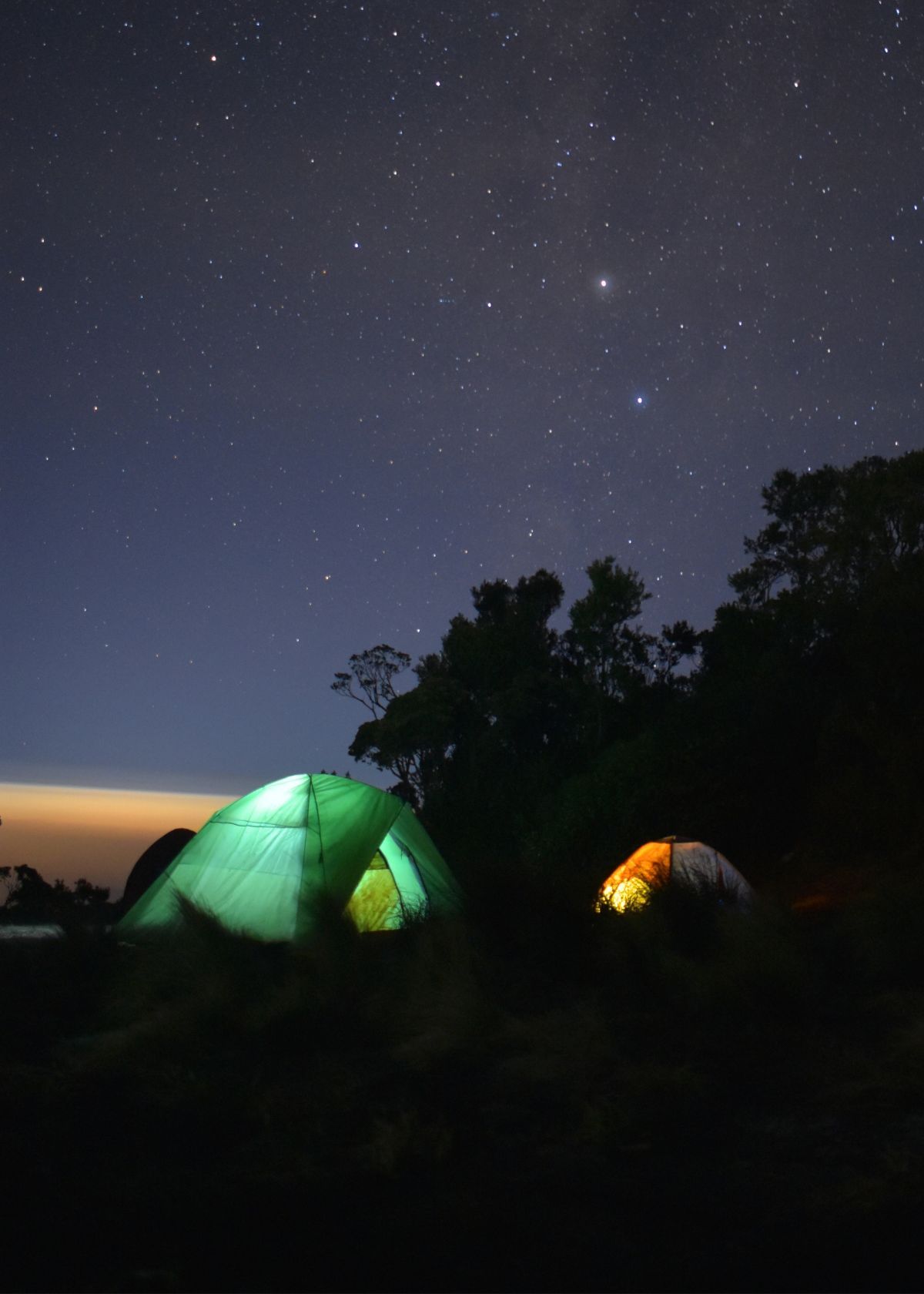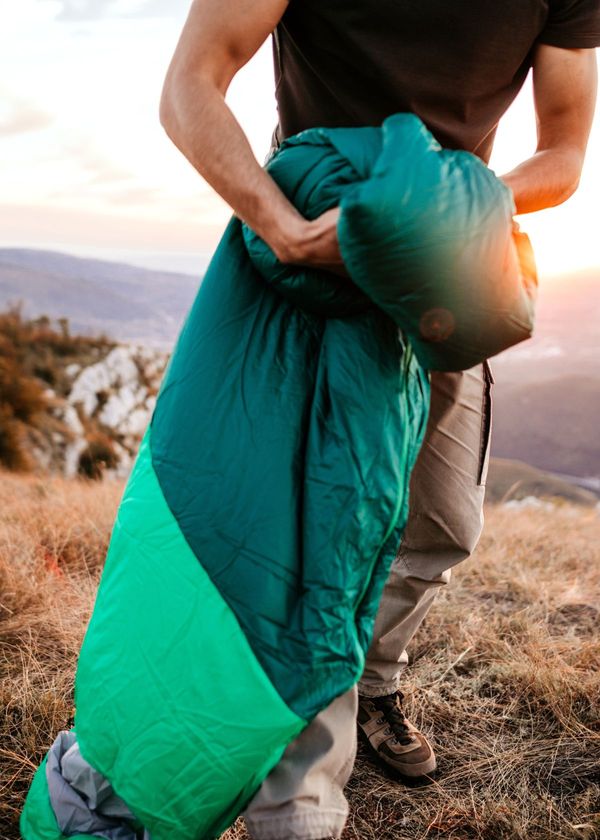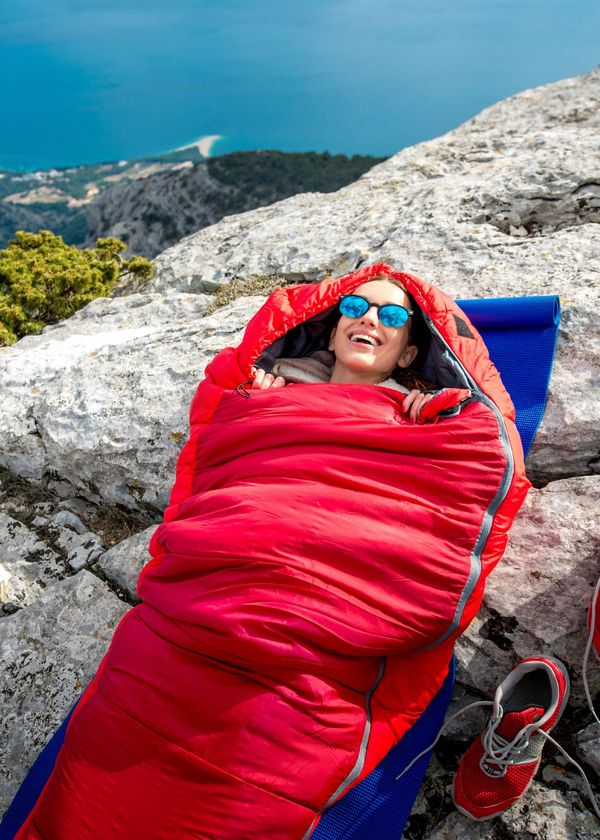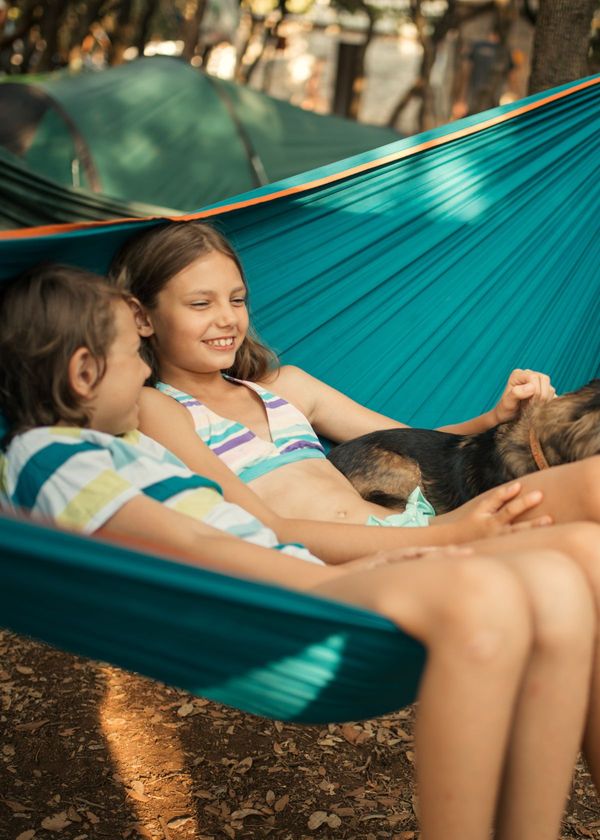As the crisp winter air encases the wilderness, venturing into the great outdoors becomes a daring escapade for the intrepid explorer. Yet, the biting cold can quickly turn even the most idyllic camping trip into a frigid challenge.
Imagine a world where electricity is but a distant memory, where modern amenities yield to the ancient art of survival. In this realm, nature reigns supreme, and ingenious methods must be harnessed to conquer the cold. So, fellow adventurers, prepare to embark on a thrilling quest as we uncover the secrets of heating a tent without electricity.
Picture yourself nestled within the rugged embrace of a wilderness campsite, surrounded by towering trees and a starlit canopy. The entire tent, your sanctuary, offers solace from the elements, but it lacks the warmth of a cozy hearth.
From ancient civilizations to nomadic tribes, our predecessors relied on primitive methods to brave the icy nights. They discovered the transformative powers of natural elements, utilizing them to keep you warm in a tent without electricity . Through their wisdom, we shall uncover the secrets of radiant warmth without the aid of modern technology.
So join us on this captivating expedition as we journey through the time-worn paths of tradition and innovation, breathing life into the cold embrace of a tent, and transforming it into a cozy sanctuary that defies the very essence of winter itself.
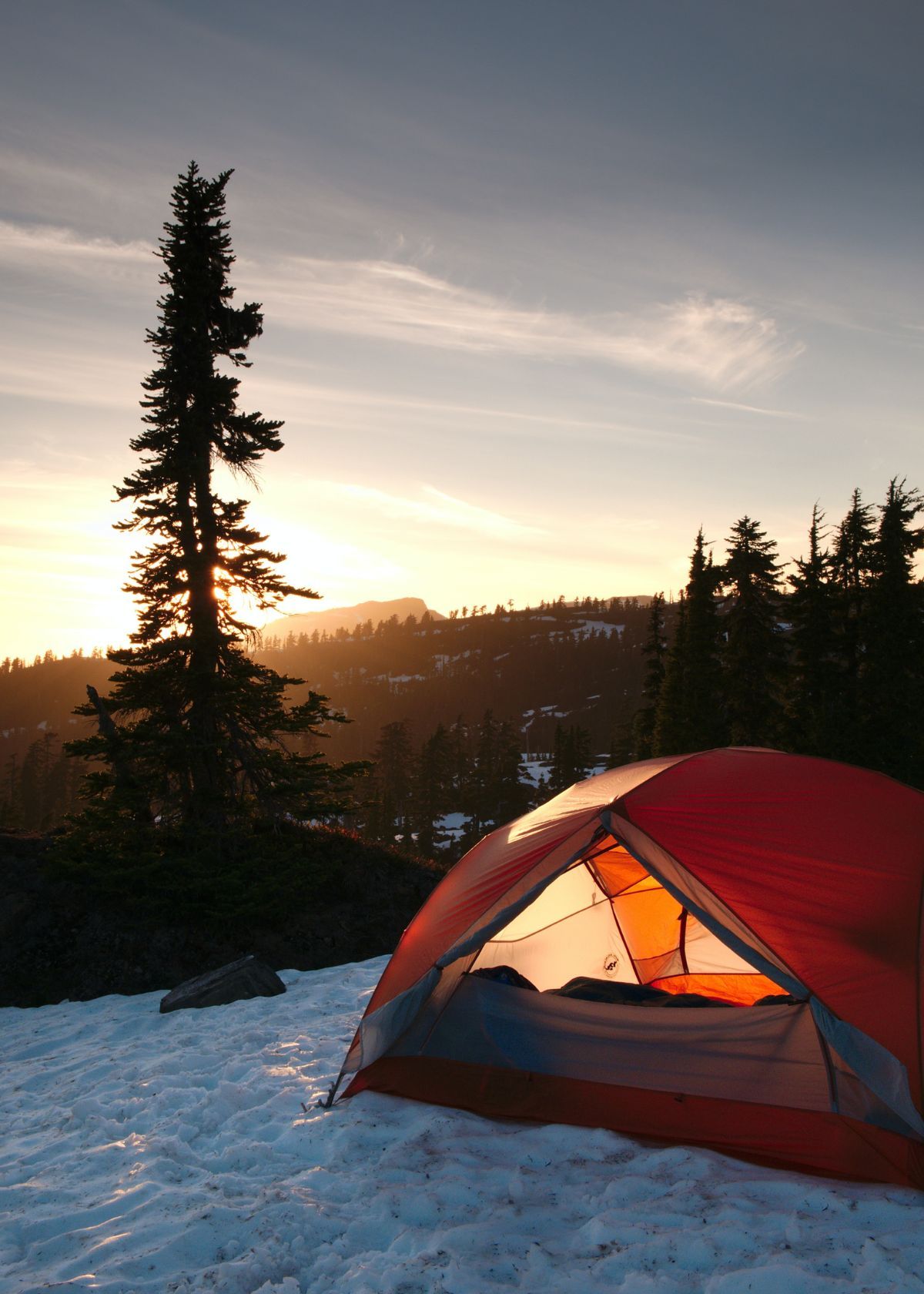
The Campfire Method: The Best Way To Heat A Tent to Stay Warm
As the cold breeze of winter sweeps through the wilderness, camping enthusiasts often find themselves faced with the challenge of staying warm inside their insulated tents. While electricity is not readily available in remote camping areas, nature provides us with a wonderful solution: the campfire.
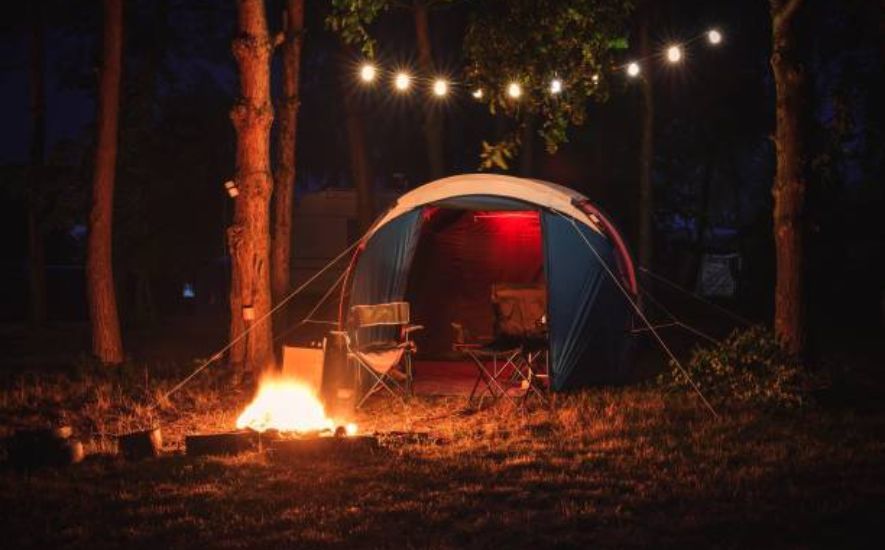
I. Choosing the Right Campfire Spot
Finding the ideal location for your campfire is crucial for ensuring effective heating inside your tent warm. Look for an open area away from flammable objects such as dry leaves or overhanging branches. Consider the wind direction to prevent smoke from entering your tent. A calm, sheltered spot will optimize heat distribution.
II. Preparing the Campfire
Gather Firewood: Collect a variety of firewood, including tinder (small twigs and dry leaves), kindling (small sticks), and larger logs. Damp or green wood will produce less heat, so opt for dry wood if possible. Remember to respect nature and only use fallen or dead wood.
Building the Fire: Start by creating a small mound of tinder in the center of your fire pit. Arrange the kindling in a tepee shape around the tinder, leaving enough space for airflow. Finally, place the larger logs around the kindling, ensuring they are stable.
III. Maximizing Heat Efficiency
Reflective Surfaces: Positioning reflective surfaces around the campfire can help direct heat faster toward your tent. Items such as emergency blankets, aluminum foil, or even portable reflector panels can be strategically placed to bounce heat back toward your tent.
Heat-Resistant Barrier: To prevent heat loss through the ground, lay down a layer of insulating material inside your tent. Emergency blankets or foam sleeping pads can be placed beneath your sleeping bags or mattresses to create a barrier against the cold ground.
IV. Ventilation and Safety Measures
Ventilation: Proper airflow is essential to avoid excessive smoke inside the tent. Crack open a tent window or door slightly to allow fresh air to circulate while letting out smoke. Be cautious not to compromise your warmth by opening too wide.
Fire Safety: Safety should always be a top priority when dealing with fire. Never leave the campfire unattended and keep a fire extinguisher or water source nearby. Ensure that the fire is fully extinguished before leaving the campsite or going to sleep.
V. Cozy Campfire Accessories
Insulated Clothing: Layering your clothing with thermal or woolen garments will help retain body heat. Don't forget to wear a warm hat and thick socks to keep your extremities snug.
Portable Heating Solutions: Innovative camping gear, such as portable wood-burning stoves or catalytic heaters, can provide an additional heat source inside your tent. However, exercise caution and carefully follow the manufacturer's instructions to prevent carbon monoxide buildup.
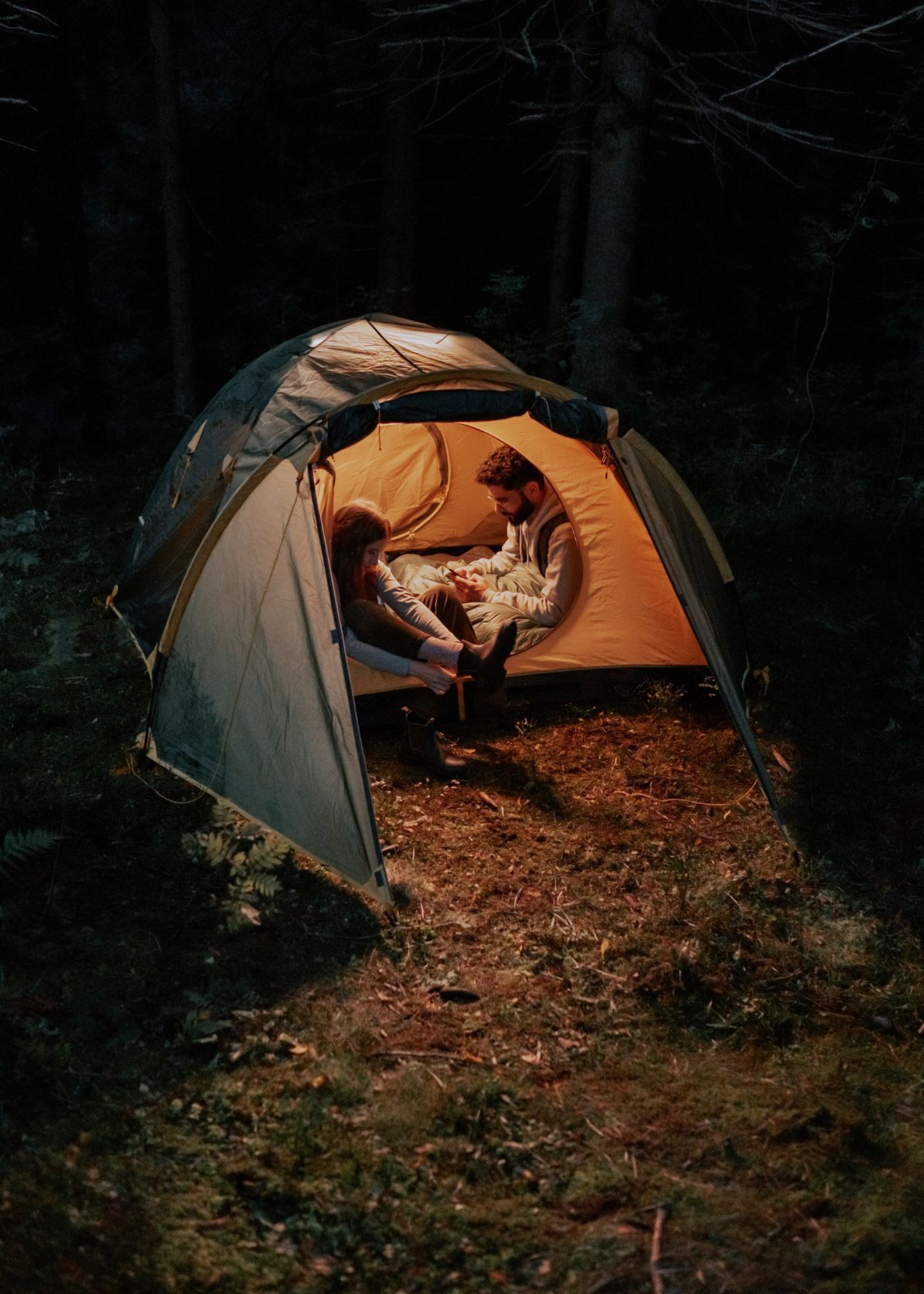
The Solar Heater Approach to Heat A Tent Without Electricity
When it comes to outdoor adventures and camping trips, one of the challenges we face is keeping warm during chilly nights. While electricity-powered heaters provide a convenient solution, they are not always practical or available. However, fear not!

By embracing the power of the sun and employing a gas heater approach, you can transform your tent into a cozy sanctuary, all while reducing your environmental impact.
I. Maximizing Sunlight Absorption
To harness the sun's energy effectively, it is essential to maximize sunlight absorption. By choosing the right location and orientation for your tent, you can optimize heat retention and circulation within the structure.
Strategic Tent Placement: When setting up your tent, choose a location that receives ample sunlight throughout the day. Look for an open area with minimal obstruction from trees or other structures. Consider the position of the sunrise and sunset to ensure that your tent captures the maximum sunlight exposure.
Proper Tent Orientation: Align your tent in a way that maximizes sunlight absorption. Ideally, position the tent entrance facing south or southwest in the northern hemisphere (or north or northwest in the southern hemisphere). This orientation allows the sun to enter through the tent's entrance, warming the interior throughout the day.
II. Solar Heater Construction
To create a solar heater, we will utilize simple materials and techniques that can easily be incorporated into your camping gear.
Solar Heating Panel: Construct a solar heating panel using reflective materials like aluminum foil or emergency blankets to capture and concentrate sunlight. Affix these materials to a rigid backing, such as a piece of cardboard or a lightweight board. The panel should be positioned outside the tent, facing the sun, to absorb and redirect solar energy into the tent.
Air Circulation System: To enhance the effectiveness of the solar heater, create an air circulation system within your tent. This can be achieved using ducts made from lightweight and flexible materials like PVC or aluminum foil. Connect the ducts to the solar heating panel and position them strategically inside the tent to allow warm air to circulate.
III. Thermal Storage Techniques
To ensure a steady and sustained heat supply during the colder hours of the night, incorporating thermal storage techniques into your solar heater approach can be highly effective.
Heat Absorbing Materials: Utilize materials with high thermal mass, such as rocks or water containers, to absorb and store heat during the day. Place these objects near the solar heating panel, allowing them to absorb and retain the sun's warmth. As the temperature drops, these materials will release stored heat, helping to maintain a comfortable temperature within the tent.
Insulating Layers: Enhance the insulation of your tent by incorporating additional layers. Thick blankets, sleeping bags, or even hay bales placed strategically around the tent can help to trap warm air inside. These layers act as a barrier, preventing heat loss and keeping the interior temperature pleasant throughout the night.
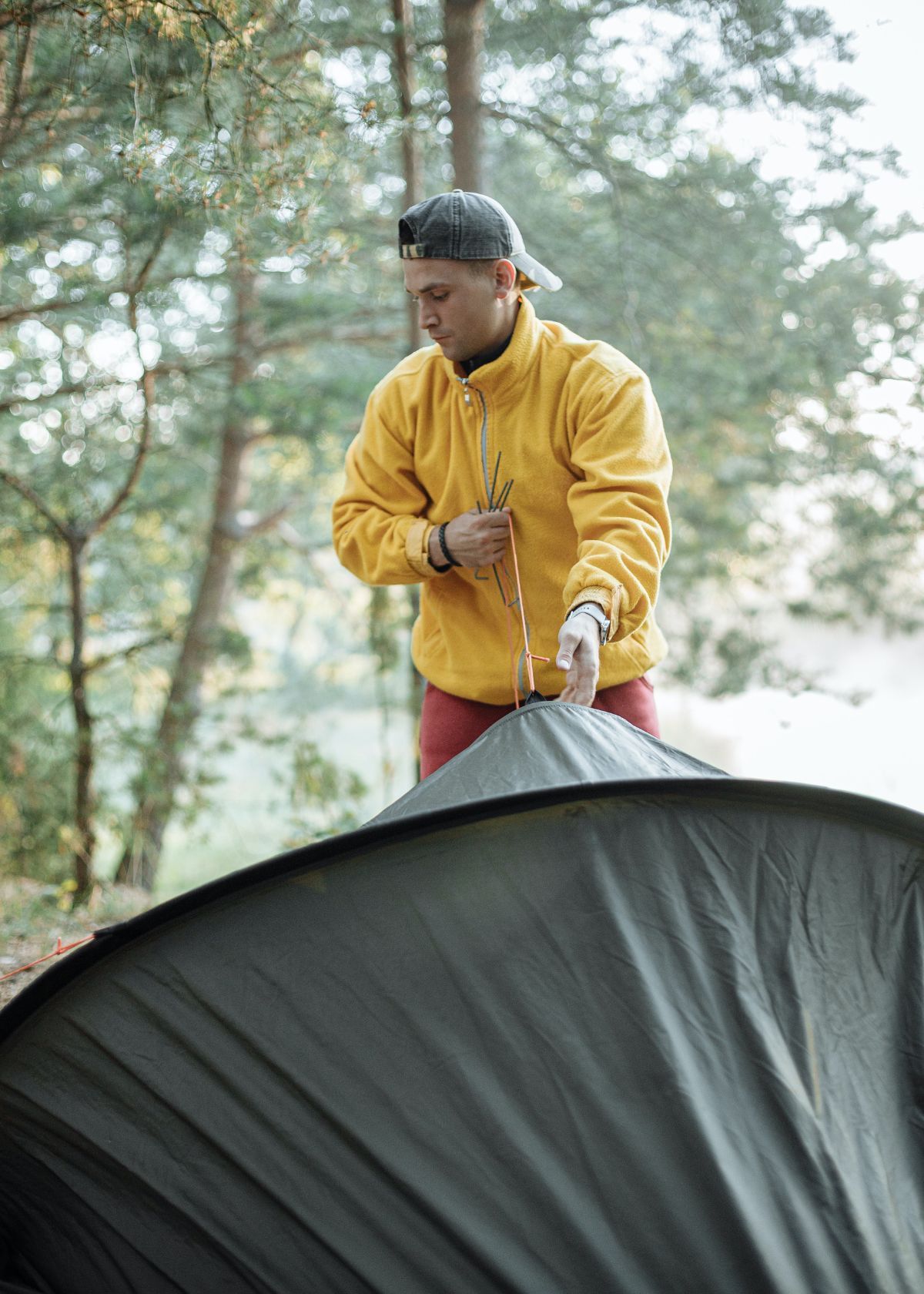
The Hot Rocks Technique To Heat Your Tent in Winter Camping
Camping in the great outdoors is a thrilling experience that allows us to reconnect with nature and escape the hustle and bustle of everyday life. However, when the temperatures drop during chilly nights, staying warm inside a tent becomes crucial for a comfortable adventure.
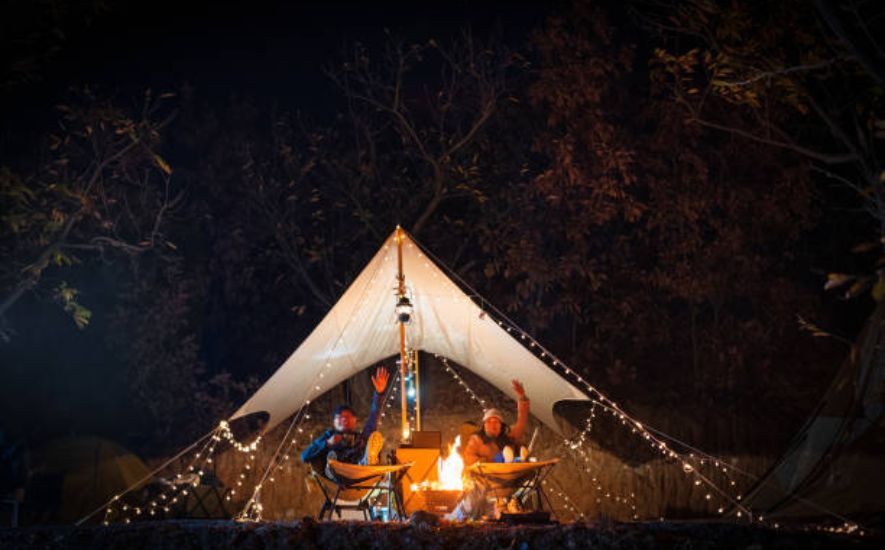
While electric heaters are a convenient option, they often require access to electricity, which may not always be available in remote camping locations. In such situations, the hot rocks technique presents an ingenious and natural way to warm up your tent without relying on electricity.
Gathering the Right Rocks:
Before embarking on your camping trip, it's essential to identify suitable rocks for this heating technique. Look for rocks that are dense and can retain heat for an extended period.
Rocks such as granite, basalt, or sandstone are excellent choices as they have high thermal conductivity and are less likely to crack when heated.
Aim for rocks that are roughly the size of your palm, ensuring they are easy to handle and will fit into your camping stove or designated heating area.
Preparing the Rocks:
Once you've collected your rocks, it's crucial to properly prepare them for the heating process. Ensure that the rocks are completely dry, as moisture can cause them to explode when heated rapidly.
It's advisable to leave the rocks near a fire or in direct sunlight for a few hours to remove any residual moisture. Safety should always be a priority, so handle the rocks with caution to avoid injury.
Heating the Rocks:
There are various methods to heat the rocks, depending on the resources available to you. Here are two common approaches:
a. Campfire Method: If you have a campfire, this method is ideal. Build a well-contained fire and allow it to burn for a sufficient amount of time until you have a bed of hot coals. Place the prepared rocks around the edge of the fire, ensuring they are not in direct contact with flames.
Let the rocks absorb the heat from the coals for approximately 30 minutes to an hour, depending on the desired temperature. Use tongs or heat-resistant gloves to carefully remove the hot rocks from the fire and place them inside your tent.
b. Portable Stove Method: If you're using a portable camping stove, this method is more suitable. Set up your stove according to the manufacturer's instructions, ensuring it's stable and placed on a fire-resistant surface.
Once the stove is heated, carefully place the rocks onto the stove's surface. Allow the rocks to absorb the heat for a similar duration as mentioned in the previous method. Once they are sufficiently heated, use protective gear to transfer them into your tent.
Placing the Rocks in the Tent:
When the rocks have been adequately heated, it's time to place them inside your tent. Create a designated area for the rocks, ensuring they are stable and won't roll or tip over.
It's essential to avoid placing the rocks directly on flammable surfaces or materials. To distribute the heat evenly, consider placing the rocks in several locations within the tent. Use caution when moving the rocks, as they will be extremely hot. Always wear protective gloves and ensure no flammable materials are near the rocks.

The Insulated PVC Pipe System To Stay Warm In A tent In Cold Weather
Imagine a serene camping experience, nestled deep in the heart of nature, with the night sky ablaze with stars. The only thing missing is the comforting warmth of a crackling fire.
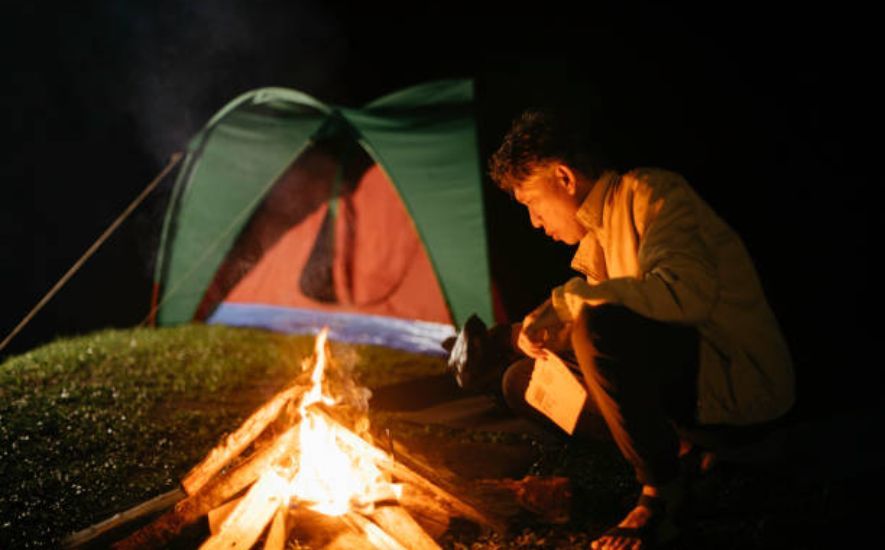
But what if you could heat your tent without electricity or the need for constant fire monitoring? Enter the ingenious solution: the insulated PVC pipe system.
Unveiling the Idea:
Tapping into Natural Heat Nature provides us with abundant sources of heat, and clever campers have found ways to capture and utilize this energy.
The insulated PVC pipe system allows you to harness natural heat, such as solar energy or geothermal heat, and distribute it throughout your tent, creating a cozy and inviting space.
Materials and Construction:
Assembling Your Heat Network To build your insulated PVC pipe system, you will need a few key materials:
1 PVC Pipes: Choose durable, weather-resistant PVC pipes in appropriate lengths to suit your tent's dimensions. These pipes will form the main channels for heat transfer.
2 Insulate Your Tent: Insulate the pipes using foam or fiberglass insulation. This helps to retain heat and prevent heat loss along the pipe network.
3 Inlet and Outlet Vents: Install small vents at the desired locations within the tent to allow the heated air to enter and circulate efficiently.
4 Heat Source: Identify a natural heat source nearby, such as a hot spring or a sunny spot. This will serve as the primary heat generator for your system.
Setting Up Your System:
A Step-by-Step Guide
1 Designing the Layout: Plan the placement of your PVC pipes to ensure optimal heat distribution. Consider the size and layout of your tent, locating the inlet vents near the heat source and the outlet vents strategically around the tent.
2 Cutting and Insulating the Pipes: Measure and cut the PVC pipes to the desired lengths. Next, carefully wrap the insulation material around each pipe, securing it with adhesive or tape.
3 Securing the Vents: Cut appropriately-sized holes in your tent fabric to accommodate the vents. Attach the vents securely to the tent using adhesive or stitching.
4 Assembling the System: Connect the insulated pipes, ensuring a tight seal at each joint. Test the system by blowing air through it to check for any leaks or inefficiencies.
Embracing the Benefits:
1 Cozy Camping: Enjoy the warmth and comfort of your tent, even on chilly nights or in colder climates. The insulated PVC pipe system provides a steady and controlled heat source without the need for electricity or open flames.
2 Sustainability in Action: By harnessing natural heat sources, you reduce your reliance on traditional fuel sources and minimize your carbon footprint. Embrace sustainable camping practices while immersing yourself in nature.
3 Versatility and Adventure: The insulated PVC pipe system can be easily disassembled and transported, allowing you to take it on various camping expeditions. Experiment with different natural heat sources and adapt the system to suit different terrains and environments.
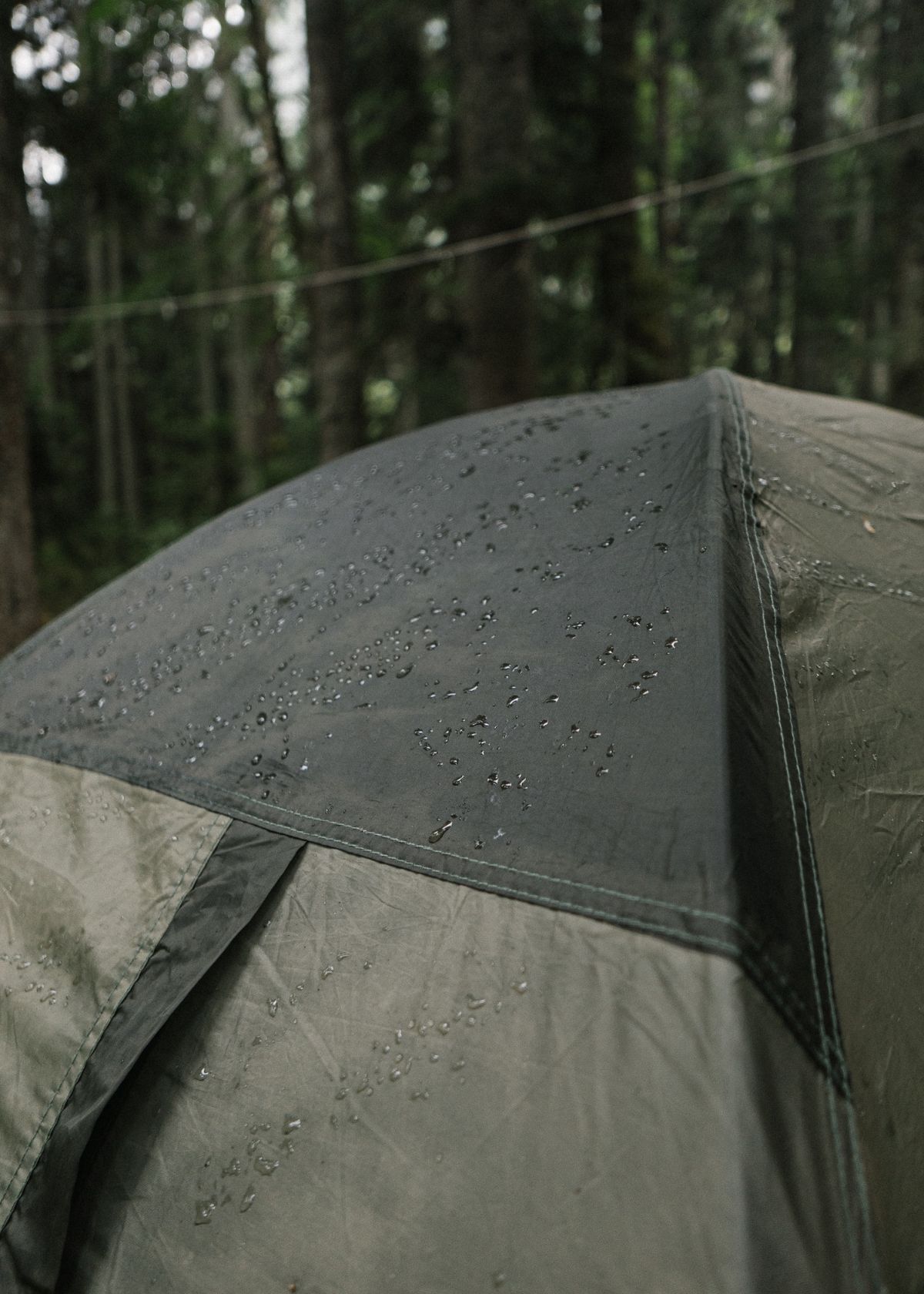
Frequently Asked Questions (FAQs)
This FAQ guide will explore various methods and techniques for heating a tent without relying on electricity. From portable heaters and wood-burning stoves to insulation and proper ventilation, we will cover practical tips to keep you warm and cozy inside your tent when traditional power sources are not available.
What can be used to heat a tent?
One creative way to heat a tent is by using solar-powered heating panels. These panels can be attached to the exterior of the tent, capturing sunlight and converting it into heat energy. As the panels collect solar radiation throughout the day, they store the heat and release it into the tent during the colder nights, providing a sustainable and eco-friendly heating solution.
Can you heat a tent?
Absolutely! In fact, there are numerous ways to heat a tent and make your camping experience more comfortable. From using traditional propane heaters to employing electric blankets or hot water bottles, there are various options available depending on your preferences and resources. Just remember to prioritize safety and follow the manufacturer's instructions when using any heating equipment inside a tent.
Is there a safe tent heater?
Yes, there are safe tent heaters available in the market. One such option is a catalytic heater, which operates on low-pressure propane and emits heat without an open flame. These heaters are designed with built-in safety features like automatic shutoff valves and oxygen depletion sensors to ensure safe indoor use. They are a popular choice for campers looking for a reliable and secure heating solution.
Conclusion
In the ever-expanding world of modern conveniences, we sometimes long for a simpler connection with nature. When it comes to camping and exploring the great outdoors, electricity is often left behind. But fear not, for the ingenuity of human beings knows no bounds.
We can heat our tents without relying on electricity by harnessing the power of natural resources and a touch of creativity. From the comforting warmth of a crackling fire to the innovative use of solar energy, the options are as diverse as the landscapes we traverse.
So, as you embark on your next adventure, remember that the absence of electricity does not dim the light of warmth and comfort in your cozy tent. Embrace the timeless ways of heating, and let nature's embrace ignite your soul.
